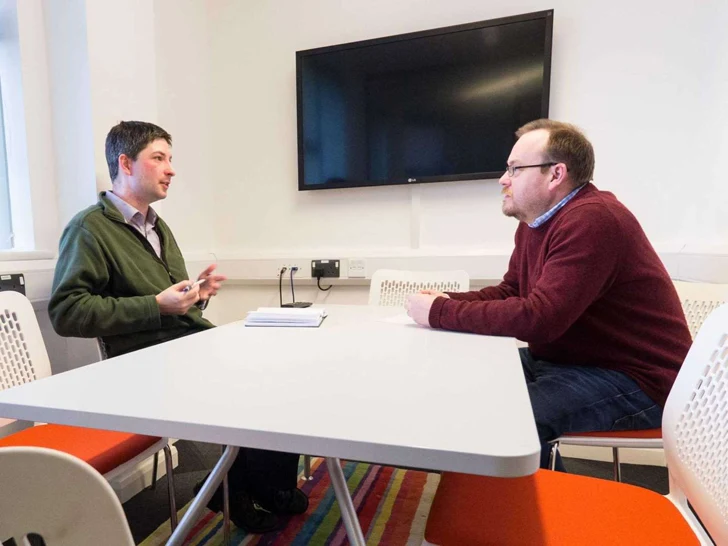
Doing a great job is necessary to get ahead in a career, but not enough on its own, says Morgan Stanley Chief Risk Officer Keishi Hotsuki.
“Just keep your head down and do a good job, and that will speak for itself.”
[post_ads]How often have you heard that before? If this was ever true, it certainly isn’t enough in today’s workplace, says Keishi Hotsuki, Morgan Stanley’s Chief Risk Officer. Business communication skills are essential. “When you first start a career in a quantitative job like risk management, you need to show how good your hard skills are and that you can deliver your assignments well. But eventually you’ll need to transition from being a good player to a good leader.”
In his 30-year long career, Hotsuki has found that the bigger the role, the more sophisticated the communication skills need to be. “My first year as Chief Risk Officer was an enlightening experience,” he says, “because the biggest challenge of the job turned out to be communication. And as you become more senior, you realize that everything comes down to the soft skills.”
Hotsuki has developed a shortlist of five essential communications skills over the years, some of which he’s culled from experts—the rest from experience. He refers to them frequently to keep his skills sharp, and shares them with his mentees:
1.
Learn to Listen

“Normally, people think that communication is all about talking. In fact, the most effective communication begins with listening,” says Hotsuki. “Rather than starting with my own agenda, I try to start with the goal of the meeting and ask questions, then listen. The benefits are twofold: First, you can understand where the other party is coming from; second, people feel better when they know they’ve been heard.” With that as a foundation, the chances for constructive engagement improve significantly.
[post_ads_2]
2.
Know Your Audience
[post_ads_2]
2.
Know Your Audience

“When giving presentations, we tend to assume that our audience knows our subject and is as enthusiastic as we are. That’s often not the case,” says Hotsuki. “If your manager invites you to a meeting with senior stakeholders, you should ask why you’re invited, what the purpose of the meeting is, who the key players are, and how you can contribute. Knowing the audience is the first step to figuring out how you’re going build your relationship with them.”
Think of presentations as three-course meals. Start with the high-level “appetizer:” Here is the issue; my recommendation and rationale. Pause to make sure your audience is engaged and ready for the next serving. Then bring out the “main course” of critical content in your presentation. “Dessert” is the detailed deep-dive. “You should only serve this part if they’re still hungry,” Hotsuki says.
3.
Practice How to Seize the Opportunity
Think of presentations as three-course meals. Start with the high-level “appetizer:” Here is the issue; my recommendation and rationale. Pause to make sure your audience is engaged and ready for the next serving. Then bring out the “main course” of critical content in your presentation. “Dessert” is the detailed deep-dive. “You should only serve this part if they’re still hungry,” Hotsuki says.
3.
Practice How to Seize the Opportunity

“Even the most professional public speakers will practice before they go on stage,” he says. Ahead of high-stakes meetings, practice your delivery: Set the goal of the meeting; summarize the key points; anticipate questions and prepare your answers. “When the senior person in the room asks, ‘Why are we having this meeting?’ you have 20 seconds, not five minutes, to explain," warns Hotsuki. "If you're not prepared to seize the opportunity, you might not get the outcome you hoped for."
[post_ads_2]
4.
Separate the Emotions from the Facts
[post_ads_2]
4.
Separate the Emotions from the Facts

The two reasons why meetings or negotiations might get derailed usually come down to disagreement over the facts or logic of a course of action, or a simple lack of good chemistry. “If it’s facts and logic, you might be able to work out the differences,” says Hotsuki. “But sometimes, you’ll find that no matter how logical your argument, someone won’t agree. That’s usually due to other sensitivities quite unrelated to the facts of the matter.”
In these situations you need to deal with the emotional aspect separately. “Perhaps a private conversation with the other party can resolve the issue. If that doesn’t work, it might help to have someone else speak on your behalf.
5.
Meet People More Often—Casually
In these situations you need to deal with the emotional aspect separately. “Perhaps a private conversation with the other party can resolve the issue. If that doesn’t work, it might help to have someone else speak on your behalf.
5.
Meet People More Often—Casually

Networking is critical, Hotsuki agrees, but he believes that, in many cases, it has to be done in a natural way, the same as you would any other relationship outside of work. “You don’t get to know people by booking formal appointments with a business agenda," he says. “Instead, take the opportunity to make connections that are quick, casual and natural. Stop by someone’s office, or grab someone before or after big meetings. This approach is more efficient and effective – easier to do, more natural and more sustainable. That's the way to build rapport."
He also tells people who are struggling to improve their relationships and soft skills to relax. “Don't be so serious about the whole thing. You have to find your own way of showing who you are. Be yourself."
Courtesy: Morgan Stanley
He also tells people who are struggling to improve their relationships and soft skills to relax. “Don't be so serious about the whole thing. You have to find your own way of showing who you are. Be yourself."
Courtesy: Morgan Stanley


















COMMENTS